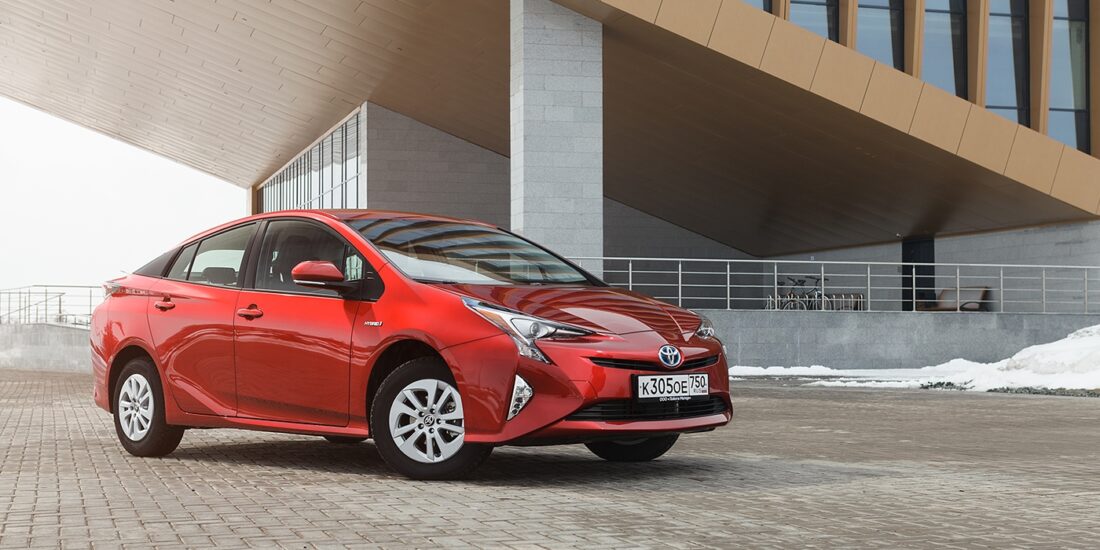
Test drive Toyota Prius
The narrow wheels on the racetrack clung diligently to the asphalt, and the brakes never overheated - is that a Prius? The Japanese, who taught us to be practical, brought to Russia the most atypical car for the crisis.
Four and a half liters per “hundred” in the “race track - traffic jams” mode - it's as if the iPhone kept the charge for more than two days. I don’t remember the last time I saw such numbers on the dashboard. Forget the angular exterior of the new Toyota Prius, all the ergonomics experiments and the world's not-so-largest interior - this hybrid hatch is like it's from a distant planet.
Surely everyone has a weird acquaintance for whom concepts such as machine learning and big data are a daily routine. But do all these geeks queuing up for the Galaxy S8 a day before the start of sales have a dream car that they would be proud of as much as a white box of AirPods? Now we seem to know the answer.
How can such a technogeny be interested in a conventional crossover with a gasoline engine and a scattering of the day before yesterday's options in the dealer's catalog? Design at best. According to the geek, there is no zest in such a car. Sitting in it, they feel like dinosaurs who want to buy the album of their favorite band on CD instead of just connecting to a convenient cloud service. The Prius is different.
It seems that the sensational “I don’t want to see boring cars anymore” by one of the top managers of the Japanese company was reflected in the appearance of the fourth generation Toyota Prius. At least its exterior cannot be called boring. Yes, someone found this design ambiguous, others were drawn to associations with space. But how harmoniously its creators connected all these complex lines and elements together!
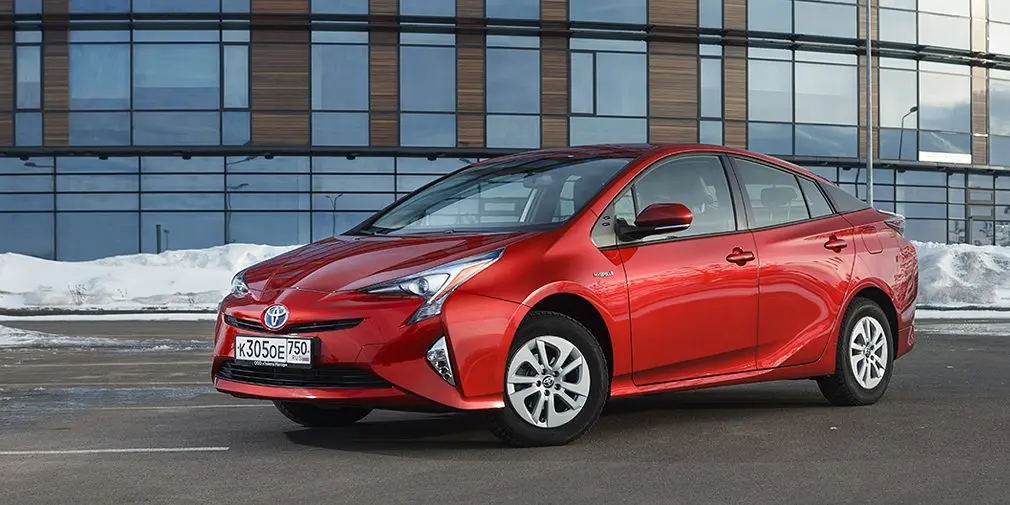
That there is at least the rear window, divided by a shelf-spoiler, or the optics cleverly inscribed in the curves of the body. Only modest and, alas, uncontested 15-inch wheels are knocked out of all this high-tech, but they were not without a surprise either. What we see is just aerodynamic linings, and the alloy wheels themselves have a much simpler and unattractive design. All for the sake of saving in weight and, as a result, fuel.
The main thing is to choose one of the three driving modes correctly: Power, Normal and Eco. There is also an all-electric EV mode, but it is only activated when driving at parking speeds. The hybrid setup in the Prius is essentially the same. It is a 1,8-liter VVTi gasoline engine running on the Atkinson cycle (a modified version of the traditional Otto cycle) and a permanent magnet synchronous electric motor.
The total power has decreased by 10 hp compared to its predecessor. (up to 122 hp), and acceleration from zero to 100 km / h is 10,6 s (versus 10,4 s for the third generation model). Despite the fact that the reconfigured algorithm of the hybrid installation now does not turn off the electric motor when accelerating up to the coveted 100 mark on the speedometer. The size of the NiMH battery has also decreased. The high-voltage storage element, capable of delivering up to 37 kW of power at its peak, is now located under the cushion of the rear sofa, next to the fuel tank. According to the manufacturer, this increased the volume of the luggage compartment by 57 liters.
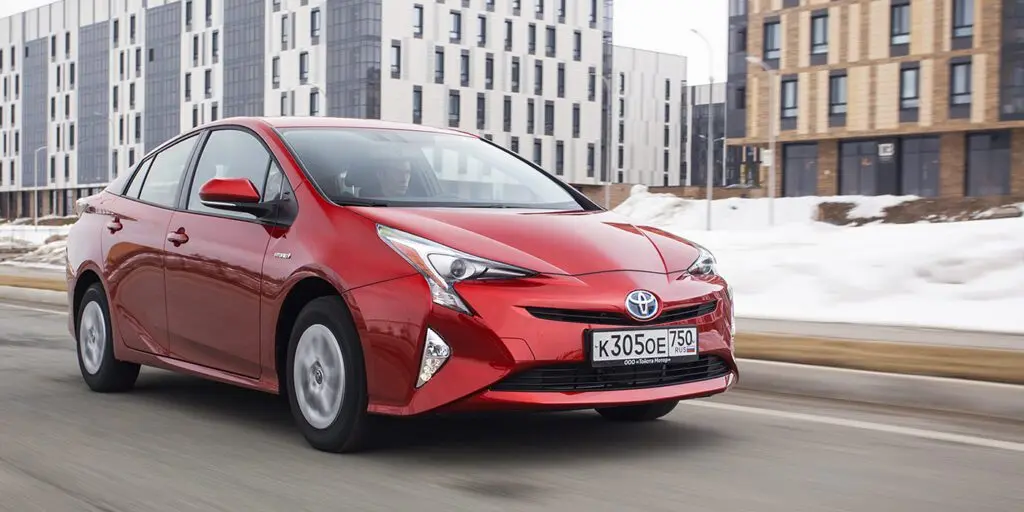
However, the large trunk is by no means the only advantage of using the latest modular TNGA architecture. The latter allows you to create almost any platform from a ready-made set of solutions. You just need to choose the right one, depending on the specialization and class of the future model. The firstborn of the Japanese company in the implementation of this approach was the GA-C platform, on the basis of which the Prius and the C-HR hybrid crossover are built.
Thanks to its use, the rigidity of the hatchback body was increased by as much as 60%, which had a positive effect not only on passive safety, but also on the car's handling. This also includes the lower center of gravity of the new Prius due to the lower location of almost everything, from the engine and the already mentioned battery, and ending with the seats in both rows.
Not without a revolution in the chassis of the hybrid hatch. In the fourth generation of the model, the continuous rear beam on torsion bars finally gave way to independent suspension on the longitudinal and transverse levers. The Prius is certainly not a sports car, but no matter what class it is, it's always nice to have your car handle well.
I was convinced of this personally, having driven a couple of laps on the Kazan Ring. Records, as expected, did not work, but how confidently Prius keeps the trajectory. Accelerating straight, I drive up to a bunch of the third-fourth turns of the track - here the brakes are in order. Further ascent and sharp descent with a turn to the left, and then a right-left link. A real test for the chassis, but here, even on the narrow tires, the Prius never slipped.
Even the special suspension for Russian roads did not spoil the impressions. Yes, other shock absorbers and springs are already installed at the factory on cars that will be sold at authorized dealers. It is now understandable why the Prius overlooked most of the pits that spring roads abound with. By the way, in addition to the suspension, cars of Russian specification are equipped with an additional interior heater, heated front seats and side mirrors, as well as an indicator of a low level of washer fluid. In other words, Russian geeks will not freeze in the Prius, even when the iPhone turns off in the cold.
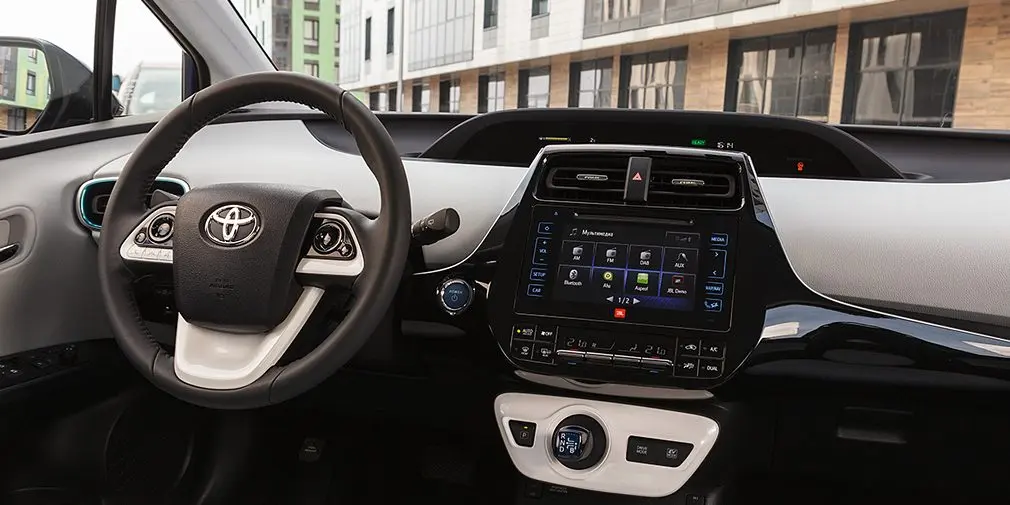
The eccentric exterior design has continued in the Prius interior. The interior was created entirely from scratch, and therefore no trace of the annoying boredom of its predecessor remained. The front panel is divided into several segments, which added solidity to it, and a little more status to the car. The impression was not spoiled by the quality of the materials - soft plastic, textured leather, but the glossy black panels instantly collect any prints and dust.
Meanwhile, the design here, although impressive, is far from the main thing. Due to the already mentioned TNGA architecture, the designers managed to win back additional space for the cabin. For example, the front seats are 55mm lower than the previous generation, while the rear seats are 23mm lower. In addition, the legroom of the rear passengers has increased, the interior has increased in breadth in the shoulder area, which means that the owner of the new Prius will be able to master not only the standard route from home to work, but also the long journey to the next conference of programmers.
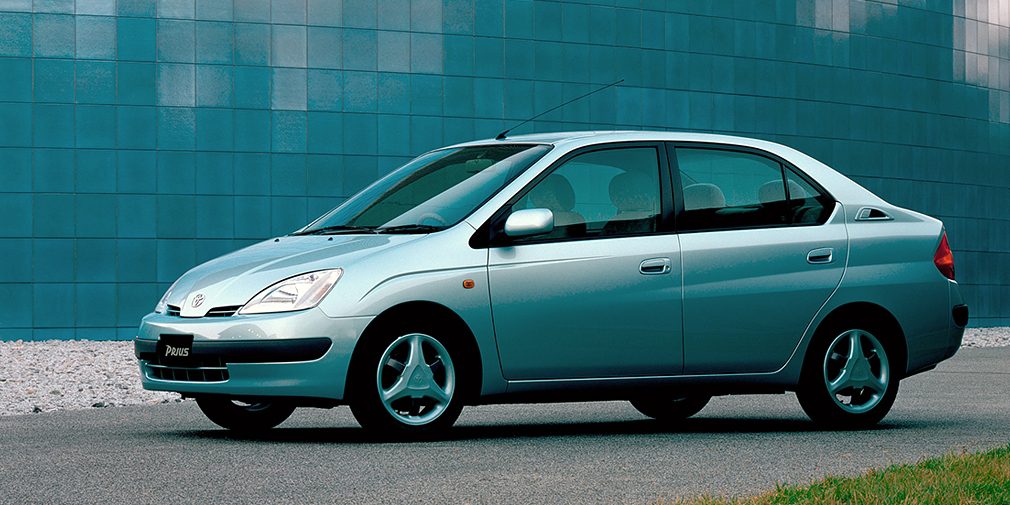
The first Prius was born back in 1997 at the cost of incredible efforts. On the path of the creators of the world's first hybrid, one problem after another surfaced one by one. As a result of all the tests, changes and improvements, the new model cost the Japanese company $ 1 billion. Despite this, it was decided to sell the car at half the cost in order to somehow attract a buyer to it. The retail price in the domestic market was slightly higher than that of the Corolla, and it worked. In the first year the company sold over 3 hybrids, and the next year, when the Prius became Car of the Year, the car sold over 000 copies.
The second generation of the model was built around the same platform, but with a liftback body instead of a sedan. This step made the car more spacious, comfortable and practical, and therefore more successful. After the explosive start of sales of the restyled version of the first generation in the United States, the new car aroused even more interest among American consumers. As a result, in 2005 Toyota sold 150 hybrids in the United States, and a year later the demand for the model exceeded 000 cars sold. In 200 it became known about the sale of the millionth Prius.
The third generation car has again added to the passenger space, as well as in aerodynamics. The modest 1,5-liter engine gave way to the 1,8 VVTi engine, and the total power of the hybrid plant was 132 horsepower. The electric motor was equipped with a reduction gear, which had a positive effect on the dynamics of the hatchback. Domestic demand for the Prius also surpassed US sales for the first time in the model's history. In 2013, 1,28 million vehicles were sold worldwide.
| TOYOTA PRIUS | ||
| Body type | Hatchback | |
| Dimensions (length / width / height), mm | 4540/1760/1470 | |
| Wheelbase, mm | 2700 | |
| Curb weight, kg | 1375 | |
| engine's type | Hybrid propulsion system | |
| Working volume, cubic meters cm. | 1798 | |
| Max. power, h.p. (at rpm) | 122 | |
| Max. cool. moment, nm (at rpm) | 142 | |
| Drive type, transmission | Front, planetary gear | |
| Max. speed km / h | 180 | |
| Acceleration from 0 to 100 km / h, s | 10,6 | |
| Average fuel consumption, l / 100 km | 3,0 | |
| Price from, $. | 27 855 |
